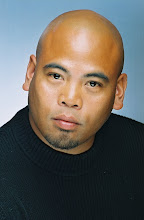A Quick Word by Brian McCormick
I watched some off-season workouts this week and read some tweets by college coaches. One tweet commented about players’ inability to improve until they are in peak condition, and the need to stress conditioning and game speed in workouts. While I do not necessarily disagree, the statement is simplistic.
During the workouts that I watched, the coach changed her emphasis every few minutes, commenting on movement quality (skill), fitness quality (conditioning) and speed quality. When teaching a new skill, one should focus on one quality.
At one point, the players worked on a new finish. From the outset, the players traveled on almost every repetition, but the coach focused on the drill’s intensity (speed). After 2-3 repetitions, the coach focused on the intensity and the quality (skill: the spin on the ball, the traveling, etc), as they continued to travel. After two more repetitions, the coach harped on the players’ conditioning and need to go hard all the time to develop the conditioning that will enable them to win games this season.
Now, none of the instructions is wrong. However, when teaching a new skill, which this finish appeared to be, the players need a more gradual approach. When learning a new skill, conditioning and intensity should not be an initial concern; instead, one should concentrate on speed and conditioning with learned skills. I did not really like the drill, so I will use a different example.
This summer, I taught several young players the “Rajon Rondo Move” (http://www.trainforhoops.com/steph-currys-craftiness/). For most, the move is new, and the footwork is awkward, as players habitually stop inside foot-outside foot, while the move utilizes an outside foot-inside foot stop.
Rather than start at half-court with a full speed sprint with the dribble to the basket before executing the move, while also using the drill for conditioning purposes through an accumulation of repetitions (essentially a form of interval training), I start close to the basket. On the left side (creates a right-handed finish), I start without the dribble and use three steps to get to the basket: right-left-right. I stop left-right and keep the left foot on the ground as the pivot foot; show the ball as a fake; front pivot on the left foot (turning away from the basket); and finish with a short right-handed hook shot.
Initially, I focus on the correct footwork on the stop (outside foot-inside foot) and the front pivot to turn toward the basket. I do not focus on the result (the coach yelled at the first missed lay-up on the first repetition and said that she would not play the player if she missed lay-ups); my focus is the process that leads to the result.
Next, I start from the same spot and add the dribble. Again, my focus is the stop and the pivot into the short hook shot. As the player starts to gain consistency with the footwork, the dribble pick-up and the fake, I focus more on the shot technique. I make sure that he pivots into a hook shot and protects the ball from a would-be defender.
As he gains consistency with the pick-up of the dribble, the footwork and the shot technique, I move further from the basket and add the element of speed. As I increase the speed, I concentrate less on the result as he adapts to the speed. When a player moves from one skill level to the next, and moving from half-speed to game-speed is a move to the next skill level, one expects a temporary plateau or even decreased performance. As he adapts to the speed, performance (made shots) improves.
Once the player has learned the move at game-speed - by learned, I mean that he can repeat the move from situation to situation with consistency and use the move from different angles - then the coach can use the move in conditioning-oriented drills, like starting at half-court and making a certain number of shots in a certain period of time.
This is not the only process of learning. Some people start with speed and try to eliminate skill errors through multiple repetitions. If speed is the initial emphasis, one must accept technical errors initially and allow some recovery between repetitions for the learning to occur. The “Rondo Move” is not a move that I would start with speed. However, if I was teaching a reverse lay-up, I might start with speed and acknowledge that the players will make some technical errors and miss some shots at the outset in their effort to go at game-speed.
Learning differs from performance. Practice during the initial stages of learning differs from practicing a learned skill. Skills should not be incorporated into conditioning until they are learned skills. There is a process, and one cannot expect a player of any age to learn a new skill with full intensity, perfect and consistent execution and stamina.

No comments:
Post a Comment